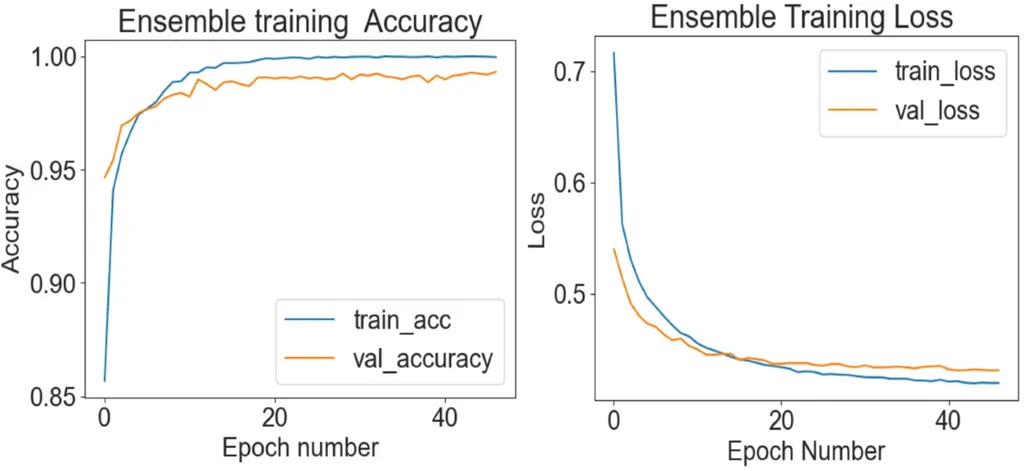In the relentless pursuit of global food security, early disease detection in crops remains a critical challenge. A recent study published in *Discover Artificial Intelligence* introduces a groundbreaking framework that could revolutionize maize disease classification, offering a robust solution to a persistent agricultural problem. The research, led by Dawit Teklu Weldeslasie from the Department of Information Technology at Aksum University, presents a statistically validated stacking ensemble of convolutional neural networks (CNNs) and vision transformers, setting a new benchmark for accuracy and reliability in disease diagnosis.
The study addresses several limitations of existing models, which often rely on single-view approaches and lack comprehensive validation. By combining four different CNNs—DenseNet201, InceptionV3, NASNetMobile, and VGG19—with a Vision Transformer, the ensemble model leverages both local feature extraction and global contextual analysis. This holistic approach enables a more accurate and nuanced understanding of disease markers in maize leaves.
The model’s performance was extensively evaluated using a challenging dataset of 15,995 field images collected in Ethiopia and from Kaggle. Utilizing stratified fivefold cross-validation, the researchers ensured a stable assessment of the model’s capabilities. The results were impressive: the ensemble achieved a mean validation accuracy of 99.13% across validation folds, a statistically significant improvement over the best individual model, as assessed by a paired t-test. On an independent test set, the model recorded an accuracy of 99.15%, outperforming state-of-the-art lightweight models like MobileNetV3, which achieved 97.62% accuracy.
“This ensemble model not only sets a new baseline for maize leaf disease classification but also demonstrates the potential for data-driven sustainable agriculture,” said Weldeslasie. “The statistically validated excellence of the heterogeneous ensemble, along with transparent analysis of computational requirements and extensive overfitting countermeasures, makes it a reliable and generalizable diagnostic tool.”
The commercial implications for the agriculture sector are substantial. Accurate and early disease detection can lead to timely interventions, reducing crop losses and improving yield. Farmers can benefit from more precise diagnostic tools, enabling them to make informed decisions about pest and disease management. Additionally, the model’s reliability and generalizability make it a valuable asset for agricultural extension services and research institutions.
While the computational demands of the model make it more suitable for server-side implementation rather than edge devices, its reliability and accuracy make it an invaluable tool for driving data-driven sustainable agriculture. A prototype developed as part of the study was warmly received by users, further demonstrating its real-world applicability.
This research not only advances the field of ensemble deep learning but also highlights the importance of integrating multiple models to achieve superior performance. The findings pave the way for future developments in agricultural technology, where the combination of different AI techniques can lead to more robust and accurate diagnostic tools. As the agriculture sector continues to embrace digital transformation, such innovations will be crucial in addressing the challenges of food security and sustainability.
In the words of Weldeslasie, “The future of agriculture lies in the integration of advanced technologies that can provide actionable insights to farmers. This research is a step towards that future, demonstrating the power of AI in transforming agricultural practices.”

